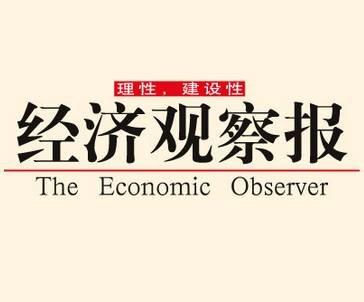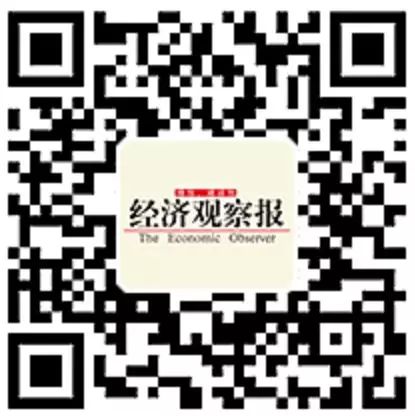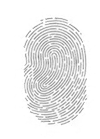Rational · Constructive

The fragrant rice combined with sweet scrambled eggs creates a unique flavor that makes it hard to distinguish the original tastes of rice and eggs. The integration of technology is similar; the fusion of analog and digital technologies in the form of the Internet of Things (IoT) is gradually entering our daily lives.



Ten years ago, Lee Yu-ning, who once served as the Minister of Culture in South Korea, first proposed that digital and analog technologies would harmoniously enter the “Digi-log” era. For someone accustomed to the binary world of 0s and 1s, the first line of Lee’s book, “Where should the tail of a snake be counted from?” was indeed a shock. The recently popular IoT technology essentially overlays digital technology onto existing analog objects, a process referred to as “Digi-logization.” The fragrant rice combined with sweet scrambled eggs creates a unique flavor that makes it hard to distinguish the original tastes of rice and eggs. The integration of technology is similar; the fusion of analog and digital technologies in the form of the Internet of Things (IoT) is gradually entering our daily lives.
The integration of IoT with existing industries is presenting itself in various forms and methods. When applied to wearables, it becomes wearable technology; when combined with home appliances, it transforms into smart homes; when cars meet IoT, they become smart vehicles; healthcare combined with IoT results in smart health; traditional manufacturing plants equipped with IoT become smart factories; even cities can take on intelligent characteristics. Recently, many media outlets have been promoting a wide variety of IoT products. Essentially, the development of IoT products can be divided into three stages.
The first stage involves simple functional overlays on existing objects, making them smarter, known as Add-on types; the second stage consists of stand-alone smart devices that can operate independently; the third stage involves connected devices that form an ecosystem through networks, capable of automatic operation without human control. Currently, the vast majority of IoT products on the market are of the Add-on type. For example, adding a moisture sensor to children’s diapers or flower pots to monitor moisture levels and send information to a smartphone. IoT technology does not have to be flashy or overly sophisticated. As long as there is an idea, quickly completing a prototype and improving it based on market feedback using the “Lean Startup” strategy can be very effective. Below are a few representative IoT products of the Add-on type.
Watches are fashionable items that can showcase personal style, and the allure of smartwatches equipped with cutting-edge IT technology is undeniable, but they cannot completely replace the weighty yet luxurious mechanical watches. Subsequently, a solution that combines the best of both worlds emerged—the smart strap. By simply changing the strap, a mechanical watch can be transformed into a smartwatch. The renowned Swiss watchmaker Montblanc has launched a smart strap called “e-strap” designed for the Time Walker series of watches. It retains the elegance of the mechanical watch while enabling smart functions such as activity tracking, notifications, and smartphone control. The T-band smart strap from the startup Kairos integrates various technologies including a touchscreen, Bluetooth, heart rate sensor, motion sensor, and gyroscope. Even Microsoft and other Swiss watch manufacturers have shown strong interest in smart straps.
Innovative products that upgrade household items to smart versions are also emerging. Imagine rushing out the door and wondering if you turned off the air conditioner or whether the iron on the ironing board is switched off. What if you could control and monitor all of this with a smartphone? By plugging a Wi-Fi-enabled smart plug into a wall socket and connecting it to household appliances, you can easily control the switches with your phone. Representative products include those from companies like Wemo and Zuli. One of the most notable products is the “SWITCH” from iDevice, which can connect to Apple’s HomeKit and be controlled via the voice recognition assistant Siri. Lying in bed reading, if you feel tired, you can simply say “turn off the lights” to complete the action. With an investment of just 200-300 yuan, you can make your home appliances smart—why not?
The motto of the German startup Tado is to give old air conditioners a smart life. The Tado°Cooling product can transform old air conditioners into smart ones. After the upgrade, the old air conditioner is equipped with an infrared communication module, allowing the smartphone to act as a remote control, enabling control of the air conditioner from outside the home. It can even use Bluetooth and Wi-Fi to create a virtual geofencing around the house. If it detects that no one is home, the air conditioner automatically turns off; conversely, if the virtual fence detects someone entering, it preemptively turns on the air conditioner.
People spend one-third of their lives in bed, and now beds are becoming smart too. At last year’s Consumer Electronics Show (CES), Withings showcased the Aura sensor, which helps promote deep sleep. Placing the sleep sensor under the mattress measures the user’s heartbeat and movements, analyzing and tracking their sleep state. It adjusts lighting to promote the secretion of sleep hormones and streams music to help users wake up in a pleasant mood. In September last year, Samsung Electronics launched the SLEEPsense smart mattress sensor based on technology from the Israeli startup EarlySense. The sensor, which is only 1 cm thick and shaped like a ping pong paddle, is placed under the mattress to analyze the user’s pulse, breathing, and sleep cycles. It can also connect with TVs, air conditioners, and lighting; when the user falls asleep while watching TV, it automatically turns off the power and adjusts the air conditioning to the optimal temperature for sleep. A bed that was merely a sleep tool has now undergone a magnificent transformation into a health-conscious, smart entity.
Traditional televisions can also instantly transform into smart TVs. In South Korea, a stronghold of information technology, the smart TV penetration rate was only 9.6% in 2014, meaning over 90% of the population was still using non-smart TVs; among users who purchased smart TVs, more than half did not use the smart features or even connect to the internet. The impression of smart TVs among the public remains that they are complicated to operate and expensive. In 2013, Google launched Chromecast, an accessory that adds smart features to traditional TVs, priced at only $35. The size of a finger and resembling a USB device, simply plugging this accessory into a regular TV enables smart TV functionality. Not only can movies and games from smartphones be viewed on the TV, but also programs from YouTube, HBO, NBA, and more. In September last year, Google released the upgraded Chromecast 2.0, which was praised by the media as “Google’s Trojan Horse in the house.” Chromecast is not just a simple streaming device; it can make appliances smart and is likely to become the centerpiece of smart homes. (Jin Zhiyuan: Director of R&D Management Institute)

 Economic Observer ∣Rational Constructive
Economic Observer ∣Rational Constructive
 Long press to scan the QR code and follow us
Long press to scan the QR code and follow us